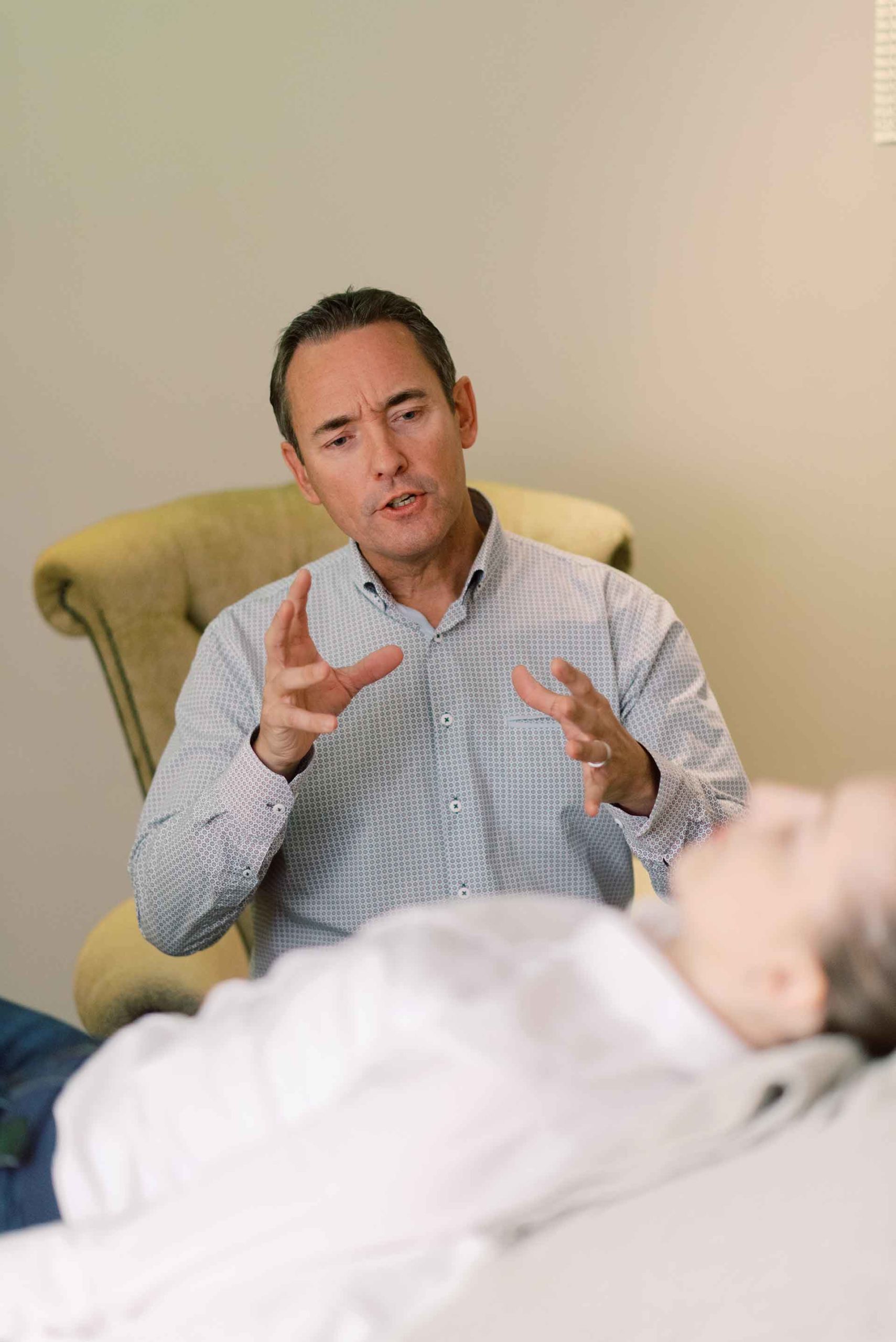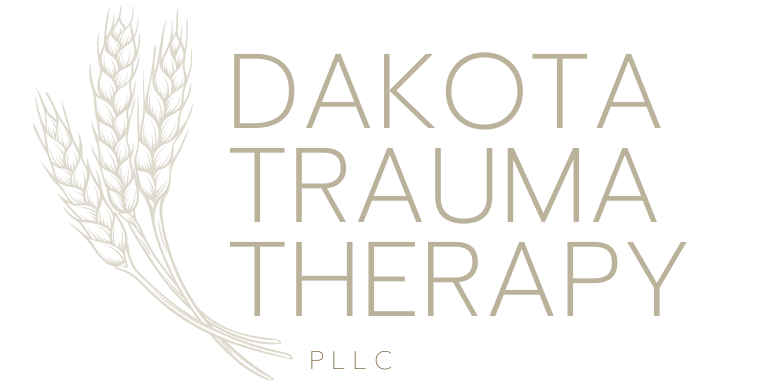Post-traumatic stress disorder (PTSD) is a severe psychiatric condition that can arise after a person has been exposed to a disturbing event involving grave physical harm or potential danger. (1) PTSD is a long-term effect of traumatic experiences that result in extreme fear, despair, or bewilderment.
This psychiatric disorder has been referred to by various titles in the past, including shell shock during World War I and combat fatigue after World War II. (2) At those times, it was regarded as a problem that only military personnel and veterans had to deal with.
But now, it has been cleared that anybody who has experienced a traumatic, often life-threatening incident can develop this stress condition.
People with PTSD have powerful, unsettling thoughts and sensations about the traumatic incident that continue long after it has occurred.
For example, they may have hallucinations or flashbacks about the experience. In addition, they may feel sad, fearful, angry, disconnected, or detached from others.
Symptoms of PTSD
Symptoms of post-traumatic stress disorder can occur as soon as a month after a stressful experience. Still, they can also take years to manifest.
These symptoms generate significant issues in social and work circumstances, as well as in relationships. They might also make it difficult for you to carry out your routine everyday activities.
According to research, men were more likely than women to experience severe symptoms and use drugs and alcohol to cope with their trauma. (3)
PTSD symptoms can be triggered by anything that makes a person feel frightened, whether the threat is genuine or imagined. For example, a sound, a fragrance, or a song can all serve as triggers. But, typically, it is emotionally linked to the traumatic incident.
Below is elaborated the four major categories of PTSD symptoms.
Re-experiencing the Trauma
When individuals with PTSD have flashbacks, they feel like they are going through the experience all over again. Flashbacks resulting in reliving the traumatic incident includes
- Recurrent memories or nightmares about the incident
- Suspicious thoughts
- Stress manifests itself physically.
- Physical sensations such as beating heart or perspiration.
These symptoms can be triggered by thoughts and feelings and remarks, things, or situations that remind the incident. (4)
Avoidance

This is desperately trying to avoid any possible triggers, such as an event, a discussion, or an idea that may bring up memories of your trauma. People’s routines may be disrupted as a result of avoidance symptoms.
A person may, for instance, avoid driving a car following a significant vehicle accident. Individuals often isolate themselves as a result of this condition. (5)
Arousal
A person who has PTSD may be apprehensive and find it difficult to relax. They may be highly conscious of potential hazards and quickly agitated. (6) Hyperarousal is the term for this mental condition which leads to:
- The tendency towards being instantly frightened
- Having trouble concentrating
- Having trouble falling asleep or staying asleep throughout the day
- Having furious or violent outbursts and feeling unpleasant
- Taking risks, being reckless, or being destructive leading to harmful conduct.
Cognition and Mood
After a traumatic experience, a person’s cognition and mood symptoms may begin or increase, causing them to feel distant from loved ones. (7) Symptoms of cognition and mood include:
- Having trouble recalling essential details of the terrible incident.
- Negative thoughts about oneself or perhaps the world and distorted memories of the incident lead to sentiments of guilt.
- Fear, rage, anxiety, and humiliation are all examples of persistent unpleasant emotions.
- Loss of enthusiasm for prior commitments.
- Social exclusion.
- Nearly impossible to have positive feelings such as pleasure and satisfaction.
Physical Symptoms
PTSD can also cause physical symptoms (8), such as:
- Sweating, trembling, migraines, dizziness, gastrointestinal issues, soreness, and chest pain
- The impaired immune system, as a result of which person becomes vulnerable to infections. (9)
Causes of PTSD
Post-traumatic stress disorder (PTSD), often sometimes confused with Adjustment Disorder, can occur due to a traumatic incident that was very distressing, frightening, or disturbing, or as a result of a sustained traumatic experience.
A variety of factors can cause PTSD; below are a few of its significant causes:
Major Accident
Individuals who are involved in a major motor vehicle accident are more likely to develop Post-traumatic Stress Disorder. Single-incident shock occurs when a person is exposed to trauma or injury only once, such as in a vehicle accident. Then the traumatic experience ends up causing PTSD. (10)
Sexual or Physical Assault
Physical or sexual assault can result in long-term trauma, leading to the development of PTSD. (11)
Chronic Health Conditions
Individuals suffering from acute stress disorder may experience flashbacks or nightmares and feel numb or distant from their surroundings. These symptoms give them a great deal of pain and difficulty in their everyday lives. More than half of patients with acute stress disorder develop post-traumatic stress disorder. (12)
War and Conflicts

War and conflicts damage communities and families, and it frequently interrupts nations’ social and economic growth. Long-term psychological consequences of such events include post-traumatic stress disorder. (13)
Child Birth
The mother may experience psychological discomfort, extreme dread, or helplessness after her child’s delivery and reach on the verge of developing Postpartum Anxiety. Following delivery, about 9% of women have postpartum PTSD. An actual or imagined trauma during delivery or postpartum is the most common cause of this condition. (14)
Why Does PTSD Develop?
Although no one is sure why people get PTSD, various theories have been proposed suggesting the possible reasons. The following are a few of the potential causes behind PTSD:
Survival Mechanism
PTSD symptoms are the consequence of an inherent system designed to help you survive future stressful events. Flashbacks compel you to think about the incident in-depth. As a result, you become mentally positioned if it strikes again.
The perception of being on edge may develop to assist you in responding rapidly in the event of another catastrophe. (15)
However, while these reactions are meant to help you survive, they are incredibly ineffective since you cannot comprehend and move on from the traumatic event.
Adrenaline Rush
When the body is in danger, it generates stress hormones like adrenaline to initiate a response. The fight or flight response is a term used to describe this phenomenon. Even when there is no risk, people with PTSD continue to generate high levels of these hormones.
It is assumed to cause the dull feelings and Hyperarousal that certain individuals with PTSD experience. (16)
Malfunctioning of Hippocampus
Brain scans show that regions of the brain involved in emotional processing are altered in patients with PTSD. The hippocampus is a part of the brain that plays a significant role in memory and emotion.
The hippocampus of people with this condition is relatively smaller. (17)
Alterations in this brain region are linked to fear and anxiety, memory issues, and flashbacks.
In addition, because the hippocampus is malfunctioning, flashbacks and dreams may not be effectively processed, resulting in stress that does not diminish over time.
Risk Factors for PTSD
PTSD does not affect everyone who has been through a traumatic situation; instead, this disorder is more likely to develop if a person possesses the following risk factors.
Prior Experience of Trauma
People who have been through a traumatic event in the past, such as rape, road accident, catastrophe, or act of violence, are more likely to develop PTSD.
That is because the trauma’s stress can build up over time, and a fresh traumatic encounter might amplify the destructive consequences of a prior one. This is certainly relevant for people who have experienced long-term childhood trauma.
History of Substance Addiction
People who have a history of addictive behaviors are more likely to develop PTSD. A person’s capacity to cope with the increased stress of a traumatic incident may be hampered by drug and alcohol abuse.
Family History of Mental Health Conditions
People who have a family history of PTSD or depression are more likely to develop it. Other mental health disorders in the family may also trigger the development of this order.
Poor social support

Healthy social and familial interactions have been shown to help buffer the effects of stress and trauma. Conversely, people who do not have supportive connections or surroundings are more prone to anxiety and are more likely to develop PTSD following a traumatic event.
Poor Coping Skills and Psychological Function
The amount of psychological functioning and coping skills can both influence an individual’s vulnerability to PTSD. People with weak coping abilities or more inadequate levels of psychological functioning are more prone to PTSD.
Hence, they may feel helpless in the face of their circumstances, or they may criticize themselves for the suffering.
Stress
Extreme or prolonged stress can cause a person to suffer from a range of physical and psychological issues making it more difficult to recover from trauma, raising the risk of PTSD.
Diagnosis of PTSD
There is no particular test that can be used to diagnose PTSD. Moreover, people with this condition may be unwilling to recall or disclose the trauma or symptoms, making the diagnosis challenging.
However, the convenient way is to consider your symptoms to diagnose PTSD. You must have experienced all of the following symptoms for at least one month to be labeled with PTSD:
- One symptom of flashback or reliving the past trauma.
- One symptom of avoidance.
- At least two arousal and reactivity symptoms.
- Two cognition and mood-related symptoms.
Psychologists and psychiatrists would like to measure how exactly the symptoms have been present and how deeply they have become ingrained in daily life.
As part of a psychological assessment, a medical expert will request you to explain your symptoms.
To be diagnosed with PTSD, your symptoms must be severe enough to discourage you from going about your everyday routine. (18)
Types of PTSD
PTSD is a single disorder with several subgroups based on a person’s symptoms. Not everyone has the same reaction to stressful circumstances or exhibits the same symptoms.
Furthermore, not everyone who has been through a traumatic event will acquire post-traumatic stress disorder. You may have gone through the same event as someone else and been affected differently.
PTSD is frequently preceded by a normal stress reaction that might progress to PTSD. Stress disorders and PTSD often share similar symptoms and may appear in the same way.
However, there are some distinctions in how each category is handled. There are five prevalent types of PSTD. The notion of five separate subcategories that require various treatment strategies has been explored in research.
Acute Stress Disorder (ASD)
It is a group of symptoms that appear within a month following a stressful incident. Many persons with ASD acquire PTSD later in life.
Although Acute Stress Disorder is not the same as post-traumatic stress disorder, it can arise in persons who have been subjected to a life-threatening event.
Acute stress disorder mainly shows up due to natural catastrophes, the death of a loved one, the loss of a career, or the threat of death.
If left unchecked, acute stress disorder can progress to post-traumatic stress disorder. (19)
Individual and group therapy, medication, and comprehensive therapies devised by a psychiatrist can all be used to treat acute stress disorder.
Normal Stress Response
Before the initiation of PTSD, there is a normal stress response. It does not, however, invariably progress to full-blown disorder. (20) This reaction can be triggered by events such as auto accidents, injuries, diseases, surgeries, and other sources of excessive stress and anxiety.
The body returns to pre-arousal levels after the danger has passed. Normal stress responses rarely have long-term consequences or interrupt daily living.
Psychotherapy is the most effective treatment for a normal stress reaction.
Normal stress response may usually be effectively handled with the support of a social circle, friends and family, and individual or group therapy sessions. Individuals who are experiencing a typical stress reaction will be able to recover in a few weeks.
Uncomplicated PTSD
Uncomplicated PTSD is the simplest form of PTSD to treat since it is tied to a single significant traumatic incident rather than several occurrences. Moreover, it is not associated with depression or other mental conditions.
Avoidance of trauma reminders, nightmares, and flashbacks to the incident, anger, mood changes, and changes in relationships are all symptoms of uncomplicated PTSD. Therapy, medicine, or a combination of the two can be used to treat uncomplicated PTSD.
Complex PSTD
Uncomplicated PTSD is the exact opposite of complex PTSD. It is brought on by a series of traumatic incidents rather than a single one. (21)
Abuse or domestic violence instances, recurrent exposure to war or communal violence, or abrupt bereavement are all significant causes of complex PTSD.
Borderline or antisocial personality disorder and dissociative disorders can be identified in people with complicated PTSD.
They have issues with impulsivity, violence, drug misuse, and sexual impulsivity, to name a few. Extreme emotional difficulties, such as wrath, despair, or panic, are also possible.
Complex PTSD treatment is somewhat more severe than uncomplicated PTSD treatment.
Comorbid PTSD
Co-occurring disorders are referred to as comorbid PTSD. It is used when a person has many mental health concerns, typically in conjunction with drug misuse problems. (22)
Comorbid PTSD is quite frequent, as many people have many disorders at the same time.
When comorbid mental health illness and comorbid PTSD are treated simultaneously, the best outcomes are obtained.
Treatment of PTSD
The purpose of PTSD therapy is to alleviate mental and physical symptoms, enhance everyday functioning, and assist the person in better managing the triggering incident. Psychotherapy, medicine, or both could be used to treat PTSD.
Medications
Medical practitioners use certain antidepressant medicines to treat PTSD and regulate anxiety and its symptoms. Some of the most commonly prescribed drugs for PTSD include:
- Citalopram, fluvoxamine, fluoxetine, paroxetine, and sertraline are selective serotonin reuptake inhibitors (SSRIs) commonly used to treat PTSD. (23)
- Amitriptyline and isocarboxazid are tricyclic antidepressants.
- Divalproex and lamotrigine are mood stabilizers.
- Aripiprazole and quetiapine are examples of atypical antipsychotics.
Experts advise against using tranquilizers for PTSD, such as lorazepam (Ativan) or clonazepam (Klonopin) because it is a proven fact that they are ineffective and carry the risk of dependency.
Psychotherapy

Psychotherapy for PTSD entails assisting the patient in developing coping skills and learning how to control symptoms.
Therapy also seeks to educate the individual and their family about the disease and help the individual overcome the concerns linked with the traumatic experience.
People with PTSD are treated using several psychotherapy treatments, the two most common of which are:
Cognitive Behavioral Therapy (CBT)
Cognitive Behavioral Therapy is an effective treatment for PTSD symptoms.
Patients are urged to re-examine their behaviors and perceptions to spot problematic patterns, including overgeneralizing adverse outcomes, pessimistic thinking that hinders positive thinking, and frequently forecasting awful effects. (24)
Eye Desensitization and Reprocessing (EMDR)
EMDR (Eye Desensitization and Reprocessing) is a complicated type of psychotherapy developed to address the suffering associated with traumatic memories. (25)
EMDR is regarded as beneficial as reliving painful situations is frequently less emotionally painful when your attention is redirected.
How to Help Someone with PSTD
When a loved one has post-traumatic stress disorder (PTSD), it affects you as well. PTSD is difficult to deal with, and it may significantly impact relationships and family life.
It is challenging to cope with such a situation. However, by following these steps, you may assist your loved ones in moving on with their life.
- Offer them social support.
- Do not compel your loved ones to speak or enforce anything on them.
- Learn as much as you can about PTSD.
- Be a good listener since a person with PTSD may need to communicate about the horrific incident repetitively.
- Rebuild your loved one’s trust and safety, and seek methods to empower them.
- Deal with their erratic behavior and rage.
- Recognize the difficulties and limitations of treatment and motivate them to seek professional help.
Final Thoughts
PSTD is a frequent mental health condition these days, and it is essential to be aware of it before seeking treatment. Recovery from PTSD is a long and winding road. It will require the assistance and support of people around you.
PTSD symptoms are rarely disguised entirely, but treatment can help people learn to manage them better. Treatment can result in fewer and milder symptoms and a better capacity to handle trauma-related emotions.
But, since we have all heard that prevention is better than cure, reach out for professional help and try treating PSTD in its early phases to avoid as many negative consequences.

